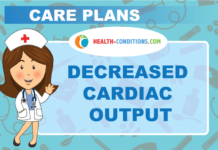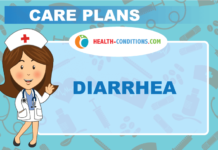Impaired Gas Exchange
The respiratory system is one of the vital systems of the body. It provides proper oxygenation for all the organs in order to function normally. One of the responsibilities of the respiratory system is for gas exchange. An individual breathes in oxygen to be transported into the lungs particularly in the alveoli and will transfer to the vital organs for its oxygenation. After the usage of this oxygen by the different organs of the body, it will release carbon dioxide as its by-product to be exhaled by the lungs going out from the body. This is the normal gas exchange process of the body.
There are times that a person can experience respiratory abnormalities or diseases wherein there is impairment of gas exchange. Impaired gas exchange is the state wherein there is either excess or decrease in the oxygenation of an individual. There is alteration in the normal respiratory process of an individual. It can have too much oxygen or carbon dioxide in the body which is not very beneficial to the organs or systems.
There are possible causes that may yield to impaired of gas exchange. Such causes can be the changes or collapse of the alveoli which can be experienced by persons with atelectasis, pneumonia, pulmonary edema, and acute respiratory distress syndrome. Hypoventilation and low hemoglobin levels can also cause impaired gas exchange. Any diseases related to the respiratory system can cause this alteration in the gas exchange process. It is very important to have a normal respiration because all of the body systems need oxygen in order to function well.
Related Factors (Impaired gas exchange related to)
- Decrease oxygen supply
- Low levels of hemoglobin in the blood which carries oxygen
- Alveolar-capillary membrane changes
- Ventilation-perfusion imbalance
- Allergic reactions
- Cardiac diseases
- pulmonary diseases
- Infections
- Smoking
- Anxiety
- Cognitive impairment
- Fatigue
- Fear
- Pain
- Surgery
- Trauma
Defining Characteristics
- Having an abnormal levels of arterial blood gasses
- Abnormal arterial pH
- Abnormal breathing pattern in terms of rate, depth, and rhythm
- Decreased carbon dioxide
- Diaphoresis
- Dyspnea or difficulty of breathing
- Elevated BP
- Hypercapnea
- Hypoxia
- Hypoxemia
- Irritability
- Nasal flaring
- Pallor
- Restlessness
- Tachycardia
Desired Outcomes
- Improvement of the gas exchange process
- Patient shows no signs of difficulty of breathing
- Patient maintains the normal respiration rate at 12-20 cycles per minute
- Patient shows normal arterial blood gas levels
- Patient maintains clear lung fields and remains free of signs respiratory infections
- Patient manifests absence of symptoms of respiratory distress.
Nursing Assessment/ Rationale
| Assessment | Rationale |
| 1. Assess the patient’s respiratory rate and note for presence of abnormalities | · This will serve as a baseline data in order to determine any altered gas exchange. |
| 2. Assess the right and left lungs by auscultation of presence of breath sounds. | · It will determine presence of respiratory problems by hearing the lung sounds |
| 3. Monitor patient’s behavior and mental status | · It is a sign that there might be decrease oxygenation in the brain |
| 4. Monitor for alteration in blood pressure and heart rate. | · It determines the presence of hypoxia or decrease oxygenation |
| 5. Observe for nail beds, skin, tongue and mucus membranes | · It will signal the presence of cyanosis which shows decrease oxygenation. It needs immediate intervention |
| 6. Monitor oxygen saturation continuously, using pulse oximeter. | · Pulse oximetry is used to detect changes in oxygenation. |
| 7. Assess the patient’s nutritional status. | · It will determine the presence of good nutrition. Because too fat or obese patients can have difficulty of breathing because of the increased needs in oxygenation |
| 8. Check on Hgb levels of the blood. | · This is the oxygen-carrying component of the blood. If the level is low it shows low oxygenation. |
| 9. Monitor chest x-ray results | · It is a diagnostic procedure wherein it shows abnormalities of the lungs |
| 10. Assess the patient’s ability to cough out secretions and include to document the quantity, color, and consistency of the sputum. | · These secretions may let the patient have difficulties of breathing. |
Nursing Interventions
| Interventions | Rationale |
| 1. Position the patient in a semi-Fowler’s position as tolerated | · It permits full lung expansion and minimizes difficulty of breathing |
| 2. Assist with ambulation or in doing activities as prescribed | · Mobility increases lung expansion and does not permit accumulation of secretions in the lungs |
| 3. Administer humidified oxygen as prescribed. | · Supplemental oxygen may be required to maintain PaO2 at an acceptable level. |
| 4. Help patient do the deep breathing exercises and perform controlled coughing. | · It will help the patient coughed out secretions and prevent stasis |
| 5. Suction as necessary. | · It will prevent stasis of secretion by manual suction. |
| 6. Assist with ADLs. | · Activities prevent stasis of secretions but it can consume a lot of oxygen levels. So it is important to do activities slowly and one at a time. |
| 7. Administer needed medications as prescribed. | · Medication depends on the causative factors. You may administer antibiotics or bronchodilators if prescribed |
| 8. Instruct patient to limit exposure to persons with respiratory infections. | · It prevents spread of infections |
| 9. Support family of patient with chronic illness. | · Reassurance from the nurse can be helpful. |













